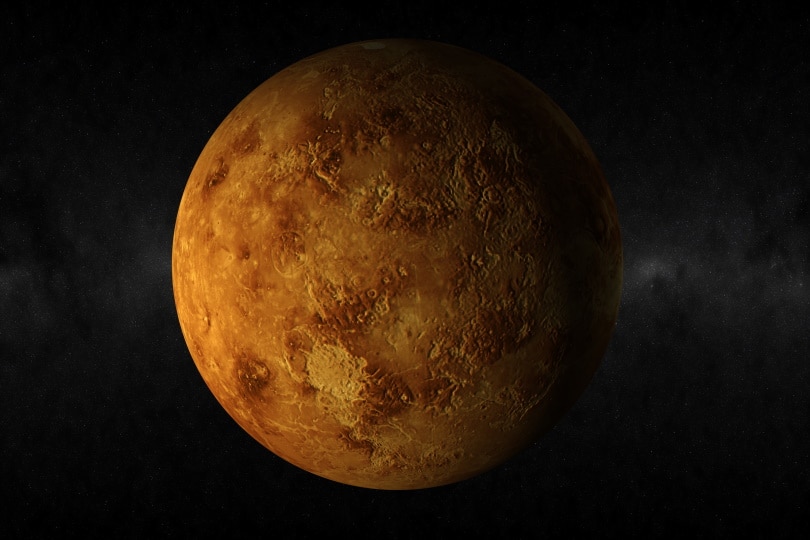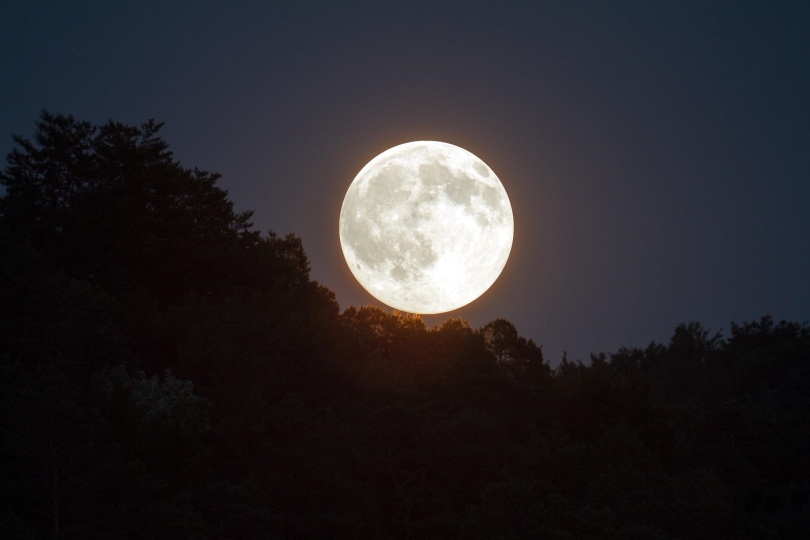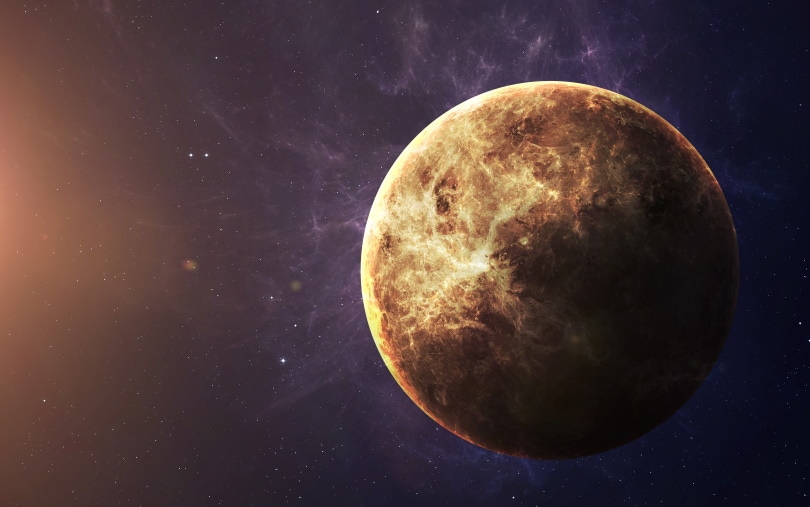How Many Moons Does Venus Have? What Is a Moon?
Last Updated on

We might feel a particular affinity for Venus as the second planet from the Sun at about 67 million miles away compared to our 94 million miles. After all, it’s sometimes visible even during the day, not unlike our Moon. We know a lot, relatively speaking, about this romantically named planet. After all, it was the first one that a spacecraft flew by with NASA‘s Mariner 2 mission.
While the International Astronomical Union (IAU) has identified 2,036 features on the planet, alas, Venus has no moons. It’s a distinction that it only shares with Mercury. All the others have at least one, even Pluto, albeit not a true example of this type of celestial body. That begs the question, what exactly is a moon, and why doesn’t Venus have one?

Defining a Moon
Merriam-Webster defines a moon as “a natural satellite of a planet.” The Universe is about 13.8 billion years old. However, our Solar System is a fraction of that age at around 4.5 billion years old. The moons of the planets formed about the same time. Some may become part of a planet’s orbit. While these natural satellites come in many shapes and sizes, their composition typically consists of dust and gas.
Venus may not have any moons because it’s so close to the Sun. Another theory posits that one may have existed but later was destroyed simply because any natural satellites would be in the line of fire from other objects swirling around in the Universe. It wouldn’t take a large asteroid to pulverize a moon. After all, one with a 9-mile wide object took out the dinosaurs about 66 million years ago.

Exploring Venus
Many spacecraft have flown by Venus since NASA did its flyby in December 1962. The closest was NASA’s Parker Solar Probe, which came within 515 miles in July 2020. We know more than ever about the planet’s landscape and atmosphere. The more we’ve learned about Venus, the more it seems less like the Earth’s twin, even though it is terrestrial, too.
Surprisingly, Mercury is more similar to us than Venus, based on their varying orbits. While the former is nearer to the Sun, Venus is hotter, with a surface temperature of 900℉. Like Venus, Mercury, too, could have lost its moons to flying debris. Perhaps Earth was just far away enough to avoid this occurrence.


Final Thoughts
While we have enough information to say that Venus doesn’t have any moons, it’s not proof that it never had any in the past. Evidence suggests that is indeed the story that played out with the second closest planet to the Sun. However, this doesn’t detract from its mystery—it just tells us that there is more to discover about our Solar System. Perhaps we’ll learn more once humans can explore Venus’s surface firsthand.
Featured Image Credit: Sabino Parente, Shutterstock
Table of Contents
About the Author Chris Dinesen Rogers
Chris has been writing since 2009 on a variety of topics. Her motto with all of her writing is “science-based writing nurtured by education and critical thinking.” Chris specializes in science topics and has a special love for health and environmental topics, and animals of all shapes and sizes.
Related Articles:
What Is the Best Binocular Magnification for Hunting? Optical Features Explained
15 Crucial Facts About Ultraviolet Rays & the Sun
What Constellation Is Spica In? The Interesting Answer!
10 Interesting Leo Constellation Facts, Myths, and FAQs
15 Interesting Pegasus Constellation Facts, Myths, and FAQs
6 Interesting Sagittarius Constellation Facts, Myths, and FAQs in 2024!
What Are Constellations? Where Did They Come From?
8 Interesting Libra Constellation Facts, Myths, and FAQs
